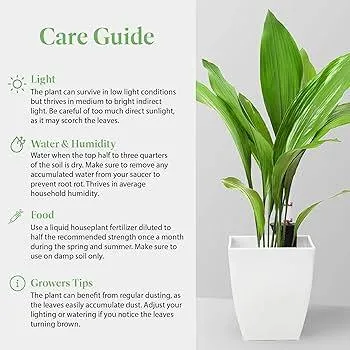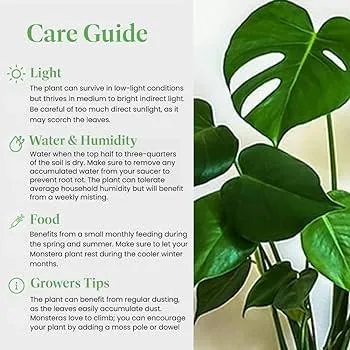Plants That Can Thrive Without Direct Sunlight
If you want to grow green things but don’t have a sunny spot in your home or outdoor space, don’t despair. There are many beautiful houseplants and outdoor varieties that can tolerate low-light conditions. In this article, I’ll discuss some top plant options for areas with little to no direct sunshine, along with care tips to help them thrive in low-light environments.
Indoor Plants for Low Light
- Pothos – Also known as devil’s ivy, pothos is one of the most forgiving houseplants. From my experience, it can live happily in very shady conditions near a north-facing window. Let the soil dry out between waterings. Its trailing vines add lovely greenery.
- Peace lily – With its dainty white flowers, the peace lily signals when it wants a drink by drooping its leaves. I’ve kept peace lilies in various corners of my home, and they’ve performed well with just indirect sun. Avoid overwatering.
- Chinese evergreen – Featuring colorful, textured foliage in shades like reddish-bronze and lime green, Chinese evergreens grow well in medium to low light. I keep mine a few feet from an east window all year round. Water only when dry.
Other good indoor options for low-light tolerance include snake plant, ZZ plant, spider plant, dracaena, and cast iron plant. The key is choosing plants adapted to shade. And don’t forget your artificial lighting—a grow light can help supplement natural light for plants that still need some photons to thrive. Here are successful strategies I’ve found: basically giving your plants brighter indoor “sun” if the conditions are super dim.
Outdoor Plants for Shade
Lots of lovely perennials, vines, ferns and groundcovers can handle life in the shade, whether that’s due to trees, overhangs, or limited sunny exposure. From my gardening experience, here are some top performers:
- Hostas – With their lush, low-maintenance foliage in varied shades of green, gold, and variegated patterns, hostas make shady gardens pop. I’ve seen them come back year after year with minimal care.
- Lily of the valley – Sweetly fragrant white blooms in spring, followed by red berries in summer. Provides nice coverage. But be warned, it can spread aggressively if not contained.
- Bleeding heart – Delicate pink blooms dangle from arching stems in spring. Dies back for summer, then returns. Looks nice paired with ferns.
Some shade-tolerant vines to consider include Baltic ivy, Japanese knotweed, Virginia creeper. You’ll also find success with ferns like cinnamon fern, ostrich fern, and maidenhair fern. Perennials like astilbe, epimedium, ferns add lovely foliage texture all season.
At the same time, don’t forget shade-loving shrubs like azaleas, rhododendrons, and hydrangeas. Proper soil preparation is key for keeping them thriving despite the low light. You can also try shade-friendly bulbs like grape hyacinth, squill, and trillium for early spring color.

The key is choosing plants specifically adapted to growing in thedappled light found in shaded spots. While they may not grow as rapidly in the shade as in full sun, with the right selections you can still create a lush, green landscape even if all you have to offerMother Nature is indirect sun beams. You know what they say—where there’s a will, there’s a way!
Creating the Right Conditions
No matter if your plants reside indoors or outside, there are some tricks I’ve learned over the years to help low-light botanicals succeed despite the dimmer digs. Proper care will go a long way for these less sunny specimens.
For starters, aim to find the brightest microclimates to site shade plants, whether that’s near a window or under a tree gap. Also make sure pots or gardens receive at least partial morning sun if possible. Next, improve soil drainage and quality for better growth. I like to incorporate compost or other organic matter.
Kind of funny, but you can supplement low natural light with artificial lighting. A few hours daily of fluorescent or LED grow lamps positioned close to leaves makes a difference. Drainage is also crucial—shade or not, wet soil roots will rot. Water only when the top inch is dry.
Finally, give plants access to cool, indirect air flow if indoors. Open windows on an occasional sunny day may help, as can using a small fan to gently move air around foliage. Proper spacing also avoids moisture build up.

With care and choosing plants adapted to dim digs, you can most definitely grow a thriving indoor or outdoor garden even where the sun don’t shine, basically. It may call for extra effort, but it’s totally possible to have lush landscaping in the shade. With a little trial and error, you’ll sort of figure out what works best in your specific conditions.
The Rewards of Shade Gardening
While growing plants without direct sunshine presents more challenges, it can still be incredibly rewarding. As I’ve found over the years caring for shady specimens, you get the lovely satisfaction of nurturing blooms and greenery in less than ideal spots. It’s kind of impressive when the conditions are subpar yet plants still take root and shine.
Plus, gardening in the shade opens up space that may have gone unused otherwise. It allows you to greenify locations that full sun plants wouldn’t hack it in. There’s also the environmental benefit of coverage—shade flora helps reduce soil temperature and retains more moisture, not to mention providing wildlife habitat.
So whether you want to brighten up a shady section of your yard or simply sneak more verdant greenery indoors, don’t let lack of sunshine stop your gardening dreams. With a little effort adapting for low light and choosing the right low-maintenance shade plants, you too can achieve stunning results even where direct rays barely reach. And isn’t that just amazing?
Questions?
I hope this guide gave you a solid introduction to successful plants, care techniques, and rewards of gardening in light-limited environments. Feel free to reach out if you have any other questions! No matter how little sun your space gets, with some know-how and effort, I believe you can still experience the relaxing escape that comes from nurturing living things.

Plants That Thrive Without Direct Sunlight
| Plant | Light Requirements | Water Needs | Growth Rate |
|---|---|---|---|
| Pothos | Low to Bright Indirect Light | Let Soil Dry Slightly Between Waterings | Moderate |
| Spider Plant | Low to Bright Indirect Light | Let Soil Dry Slightly Between Waterings | Moderate |
| Peace Lily | Low to Medium Indirect Light | Let Soil Dry Slightly Between Waterings | Moderate |
| Snake Plant | Very Low Light | Let Soil Dry Completely Between Waterings | Slow |
| Chinese Evergreens | Low to Medium Indirect Light | Let Soil Dry Slightly Between Waterings | Moderate |
FAQ
-
What kinds of plants can grow without direct sun?
Basically, there are several varieties of plants that don’t need a lot of sunlight to grow well. Some common ones are english ivy, pothos, lucky bamboo, Chinese evergreen, philodendron, and spider plant. They can survive in low-light conditions inside homes or offices.
-
Do all shade-loving plants need zero sun?
Not exactly. While they’re called shade plants, most of them need at least some sunlight each day, even if it’s only indirect light. Total darkness is not good for any plant. They kinda need a little sunlight to carry out photosynthesis. But shade lovers can thrive with just a few hours of filtered sunlight through a window.
-
How long can plants survive without light?
It varies depending on the plant. Some can go weeks without light, but will become leggy and less lush. Others may only last a few days in complete darkness before they start dying off. The longer a plant goes without any light, the harder it’ll be to bring it back to a healthy state. Basically, light is essential for plants long-term, even if just a tiny bit each day.
-
Are any shade plants toxic to pets?
At the same time, some shade-loving plants can be poisonous to cats and dogs if they decide to chew on them. Spider plants, for example, can cause mild upset tummies in some furry friends. Peace lilies are another pretty shade plant you’ll want to keep away from nibbling pets. Maybe check online lists of toxic indoor plants to be safe. Your pets’ safety comes first!
-
Can shade plants improve indoor air quality?
Studies show that certain popular shade plants are great for cleaning the air in homes and offices. English ivy, snake plant, and bamboo palm are among the champs at absorbing chemicals like formaldehyde, benzene, and trichloroethylene. Who knew something so easy to care for could basically act as a natural air purifier? It’s an amazing hidden bonus of keeping plants indoors.

-
How do you keep shade plants healthy indoors?
Despite not requiring much light, shade plants still need consistent care. Water them when the soil becomes dry to the touch but not soggy wet. Move them to a spot with bright, indirect light. Check for pests and remove any foliage that looks ill. Repot annually in the spring. Following these simple steps should keep your low-light plants looking stunning for a long time to come.
-
Why might some houseplants not thrive for me?
There could be various reasons a plant you brought home isn’t quite as stunning as the ones in the store. Possibly the growing conditions in your home aren’t perfect for its needs. Light, moisture, temperature or nutrition play key roles. Or you might be overwatering or underwatering it due to how long you’ve had it. Nevertheless, don’t lose heart. With some adjustments to care, many plants can still be nursed back to health.
-
Do you have any other tips?
A funny thing about shade plants – they may not need much light like their sun-loving cousins, but they still rely on photosynthesis to live. So sometimes giving them a boost under grow lights in winter can help. What types of grow bulbs to use depends on the plant. On the other hand, most won’t mind lower light at this time of year either. Overall look for balance in how you nourish these low maintenance indoor plants. A little TLC goes a long way, sort of.
